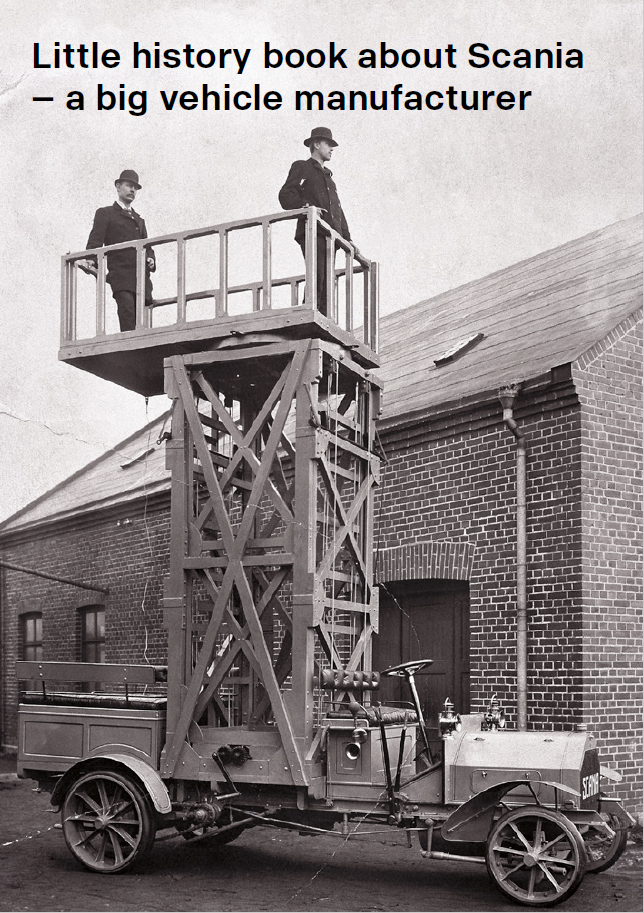Brand history
Trademark history
The Scania trademark has a long tradition. Vagnfabriks Aktiebolaget i Södertelge (Vabis) was established in 1891. The name Scania is the Latin name of Sweden’s southernmost province, where we started bicycle production.
In 1901 a logotype with a griffin at the centre of a stylised bicycle pedal crank was registered. The griffin was borrowed from the 17th century coat of arms of the region. The mythical four-footed animal has origins from 3000 BC India, and has the hind legs and tail of a lion and the forelegs, head and wings of an eagle.
In 1911 Scania, now producing cars and trucks, merged with Vabis in Södertälje. The well-known symbol with the pedal crank and griffin were combined with the names Scania and Vabis to create the trademark of the new company.
In 1969, Scania-Vabis merged again – now with aircraft and car maker Saab – to form Saab-Scania, and the group decided to only use the wordmark Scania on its trucks and buses.
In 1984, the griffin made its comeback. The artist Carl Fredrik Reuterswärd, best known for his sculpture of a gun with a knotted barrel outside the United Nations buildings in New York, created the new Saab-Scania symbol. Instead of the pedal crank spherical rings now surrounded the griffin.
In 1995, Scania again became an independent company, and a new Scania symbol was needed. The trademark with the pedal crank and the griffin was brought back in a modernised form.
In 2016 the logotype was updated for the first time in 20 years, contemporised with a more distinct wordmark and a three dimensional finish of the symbol, connecting it even more to physical appearance of the symbol (e.g. on our vehicles).
Milestones
Ever since 1891, we have been developing transport of both goods and people. These are a few of the many milestones we have achieved so far. Over the years, we have always transformed, to be relevant to our customers, and to drive the change of the transport industry.
1891
In the very beginning, we made bicycles and railroad carriages. As new technologies emerged we transformed and started making cars, trucks and buses.
1902
In 1902 both Scania and Vabis introduced their first trucks. Trucks and buses soon became the main products, with focus on quality, fuel economy, and customer value.
1934
The last year that the company shows a loss. For more than eight decades, Scania has reported a profit every year.
1940s
In the 1940s, we launched diesel engines with direct fuel injection, increasing fuel efficiency by 20-25%.
1961
In 1961, the first supercharged truck engine, with a "Super" badge on the front grille was introduced.
1969
In 1969, the new Scania V8 was the most powerful truck engine in Europe.
1980
In 1980 Scania’s modular system offered both economy of scale and customisation to customers’ needs.
1990s
Already in the 1990s we introduced vehicles that can run on renewable fuels, like ethanol and biogas.
1990s
In the 1990s we worked with our corporate culture and our core values, and we learned to love deviations.
2003
In 2003 started driver competitions to increase awareness of road-safety, improve fuel consumption, and highlight the importance of drivers.
2011
Since 2011, half a million Scania vehicles have been connected, enabling us to measure carbon emissions from vehicles in use. We were first to introduce connectivity as a standard.
2020
In 2020 we became the first in our industry to confirm Science based targets aligned with the Paris Agreement. We also commercially launched our first fully electric truck.
More information
Read more about Scania on scania.com:
Download our corporate, sustainability and financial presentations from Reflex:
You may also download Little history book about Scania (from 2018).
